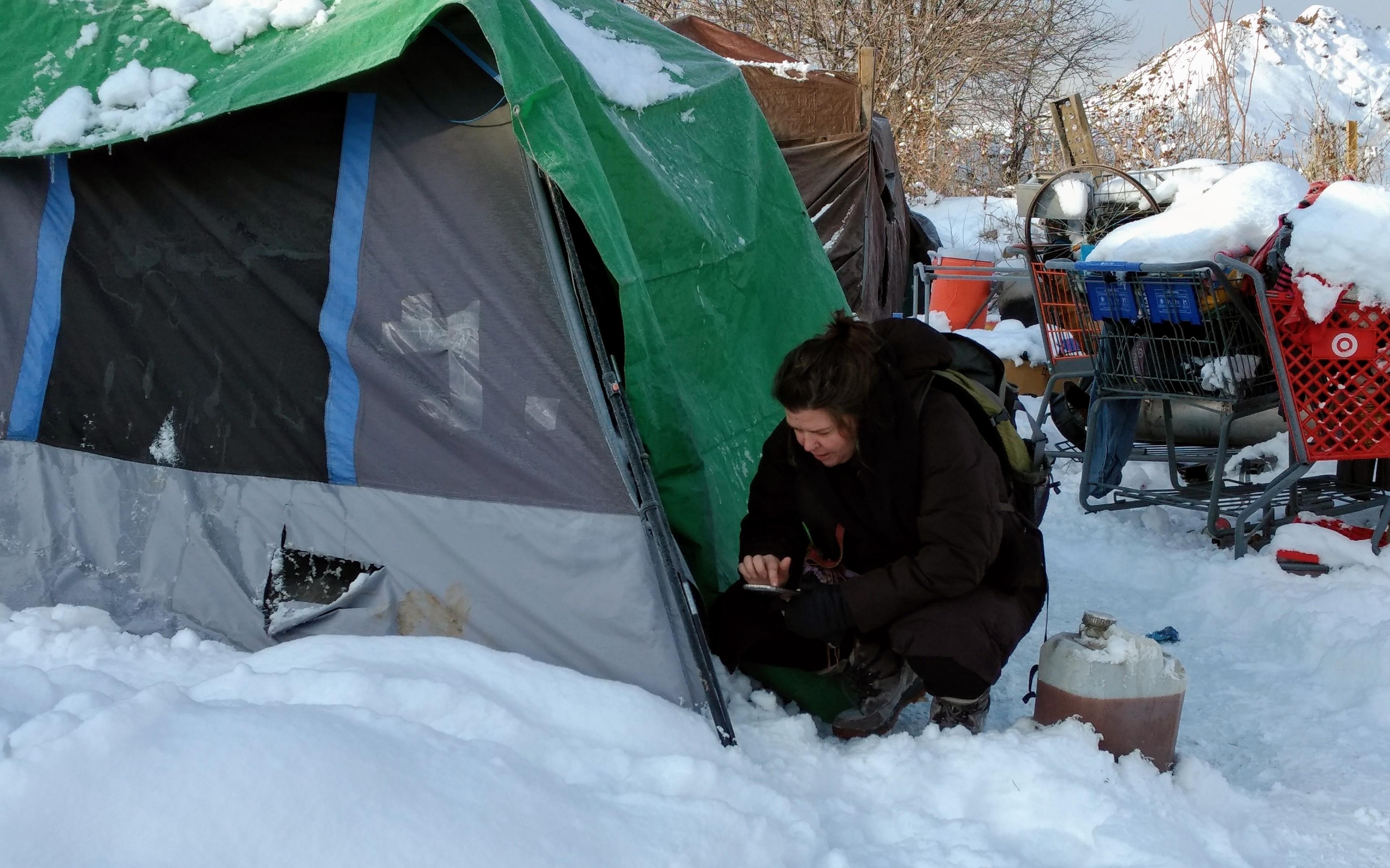When the weather gets really bad, people experiencing homelessness in Adams County have a new option for shelter.
Since early February, the county has been piloting its Severe Weather Activation Plan in which hotel vouchers are distributed to those in need when it's below 32 degrees and wet, or below 20 degrees without snow or rain. It's the first such weather shelter program for the suburban Denver county.
"This is a survival program that is geared to save lives in inclement weather," said Samantha Olson, who for a year and a half has held the new position of homelessness outreach liaison for Adams County.
The pilot also is "a good chance for us to see, 'Does this even address the needs that we know are out there?'" Olson said in an interview Friday.
Throughout a snowy February, two dozen vouchers were distributed, providing shelter to 18 individuals at three hotels.
Olson said discussions about severe weather shelter started in earnest about a year ago when the area was struck by what was known as a bomb cyclone, an icy storm packing high winds.
The sense, she said, was that "we can't spend another winter not trying something."
Adams County has three shelters with a total of about 30 beds that mainly focus on offering long-term support for families. Michael McKelvey is executive director of one of the shelter providers, Cold Weather Care. He said all struggle to respond quickly in an emergency. That often means people experiencing homelessness, particularly if they are single, have to get to Denver to find shelter, said Ashley Dunn of another of the Adams County shelter providers, Almost Home.
Denver has by far the most emergency shelter beds in a region where homelessness has historically been seen as a city problem. The Denver Rescue Mission alone can accommodate some 900 people at three sites in Denver.
McKelvey, Dunn and the leader of the other Adams County shelters, Megan Vizina of ACCESS Housing, helped develop the voucher plan. They had considered a program similar to nearby Jefferson County's, in which a network of churches provide shelter in bad weather, Olson said. Vouchers were settled upon as a faster, more flexible solution.
In January, Adams County lost a shelter program run by the nonprofit Growing Home. In that program, churches provided space for up to 16 families that shifted from church to church as space and volunteers became available. Karen Fox Elwell, president and CEO of Growing Home, said late last year that the program was being shut down in part because it was becoming increasingly difficult to find church partners to provide shelter.
On Friday, with a storm expected over the weekend, Olson met to prepare for an activation of the program with McKelvey, Dunn and LaTasha Wade. As navigator for the Severe Weather Activation Plan, Wade interviews applicants and distributes the vouchers from an office at the Adams County Human Services Center, at 11860 North Pecos St. in Westminster.
Flyers about the program are distributed at organizations that provide services to people experiencing homelessness. Librarians, police officers and others also distribute the flyers, which explain what kind of weather triggers the program and directs the needy to Wade's office.
"We hand them (flyers) out from our own cars as well," Dunn said. "I have a stack in my glove box all the time."
Information is available on the web site of the Adams County Coalition for the Homeless.
Olson's team requested $50,000 when the proposal was presented to the county board of commissioners. The commissioners approved spending of up to $100,000 for the vouchers.
Once the winter season ends in April, the program will be evaluated using information Wade is collecting about needs. The county and its partners will then determine a long-term approach, Olson said.













